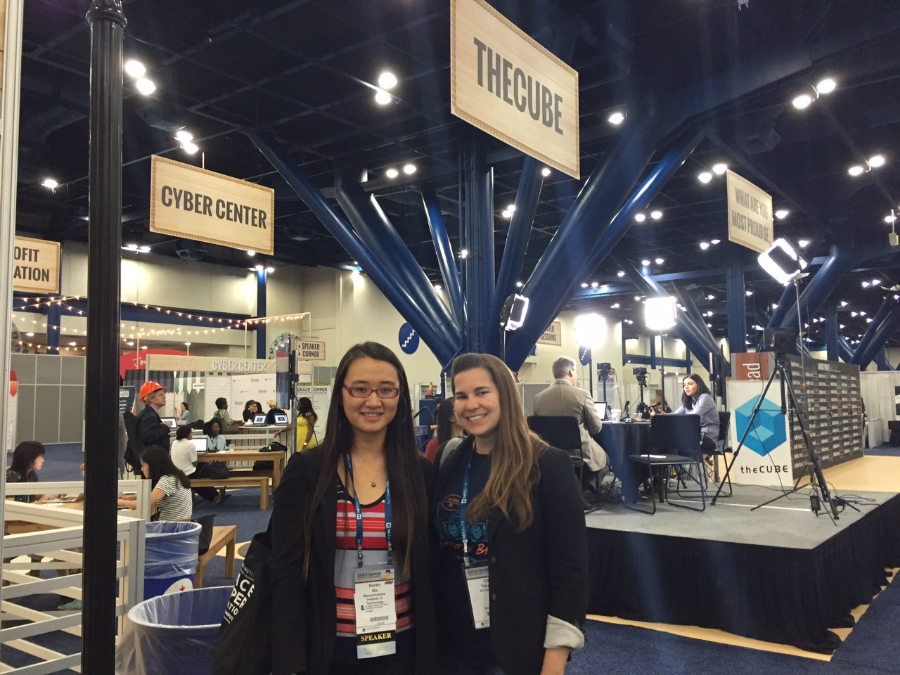Grace Hopper Takeaways: Pipeline, Retention, and Diversity
A few weeks ago, I attended my first Grace Hopper Celebration as a technical speaker. There, I presented twice, sharing some findings from my research work on human-robot interaction. I walked away from the conference having learned two new words: pipeline and retention. Don’t get me wrong – I know and understand these words individually, but I’ve never heard these two words used more frequently anywhere else in my life. Every keynote and plenary speaker talked about either the pipeline problem, the retention problem, or both. They picked sides over which is the bigger problem, or waffled between the two. Every brunch, linner, and dinner conversation revolved around these two keywords.
As a young, female member of a technical field, I’ve never previously given either terms much thought. Pipeline reminded me of the Keystone project, and retention was completely gender-neutral; of course employers should want to retain their people. Nonetheless, apparently, in the world of women in computing – or for any homogenous field – pipeline and retention are two fundamental approaches for promoting diversity. It’s impossible to confront the disparate number of women-to-men in tech without addressing the shortcomings of pipeline and retention.

As I learned at GHC, the pipeline for channeling more women into the tech industry is broken. Women filled more programming positions in the 80s than they do today, 37% at its peak compared to today’s meager 26%. The decline in representation started after the first dot-com bubble. Girls in middle and high school began to believe that programming was uncool; nobody wants to invite that kind of social suicide, especially in high school! As a result, only 19% of high school programming students are girls, and 18% of computer science majors today are women. The pipeline issue is, at its core, a simple concept: If we can’t get more girls interested in computer science in the first place, there will never be more women in tech. Logic would dictate that, if we increase the percentage of girls majoring in computer science, we’d solve the problem! If only it was that simple.
The retentionists, on the other hand, believe that it is the atmosphere of the tech industry that is driving women away. Unfortunately, they have the data to support this theory. Nearly 40% of women leave the industry after just a few years, driven out by hostility, sexism, and inflexibility. Previously, I’d only read about immature boys being insensitive at work; it seemed ludicrous to me that adult, grown men could treat others so cruelly. But at GHC, I heard a number of first-person accounts of uncomfortable and cringe-worthy experiences from speakers and alumna. Although I’m grateful to have never witnessed such behavior, unbelievably, these stories are real and sadly prevalent.
So which is the bigger problem? I’m going to side with YouTube CEO Susan Wojcicki and say that we need to fix both; it’s essential that we solve both the pipeline and retention issues before we have a chance of building an equally-represented industry.

Aside from learning about the problems in our field, I’m glad that GHC fueled valuable conversations aimed at improving company policies and setting positive precedences for better work environments for women. Policies to extend paid family leaves and increase transparency of salary data were widely discussed at the conference. Workshop sessions such as Lean In Circles were packed with professional women seeking to joining and lead peer support groups. Speakers and attendees alike exchanged ideas about programs that encourage girls to explore STEM fields. Hadi Partovi, founder of Code.org, shared the promising statistics that, 43% of the k-8th grader who participated in Code.org’s courses have been girls.
We all need to be the change we seek. Here is a list of action items I took away from the conference. (This is going to sound like a radio station campaign.)
- For minimum commitment to our cause, the very very least that we, the women in tech, can do is to stay in tech.
- For a fifty-dollar, or one-hour, commitment, we have the pipeline package: help a local school to host an Hour of Code, and thereby exposing both boys and girls to programming, and breaking the gender stereotype.
- For a lifetime of friends and helping your peers, there is Sheryl Sandberg’s retention package: start or join a women-in-tech Lean-In circle, a fight-club-esque peer support group for women where everyone encourages everyone else to stay and succeed in tech.